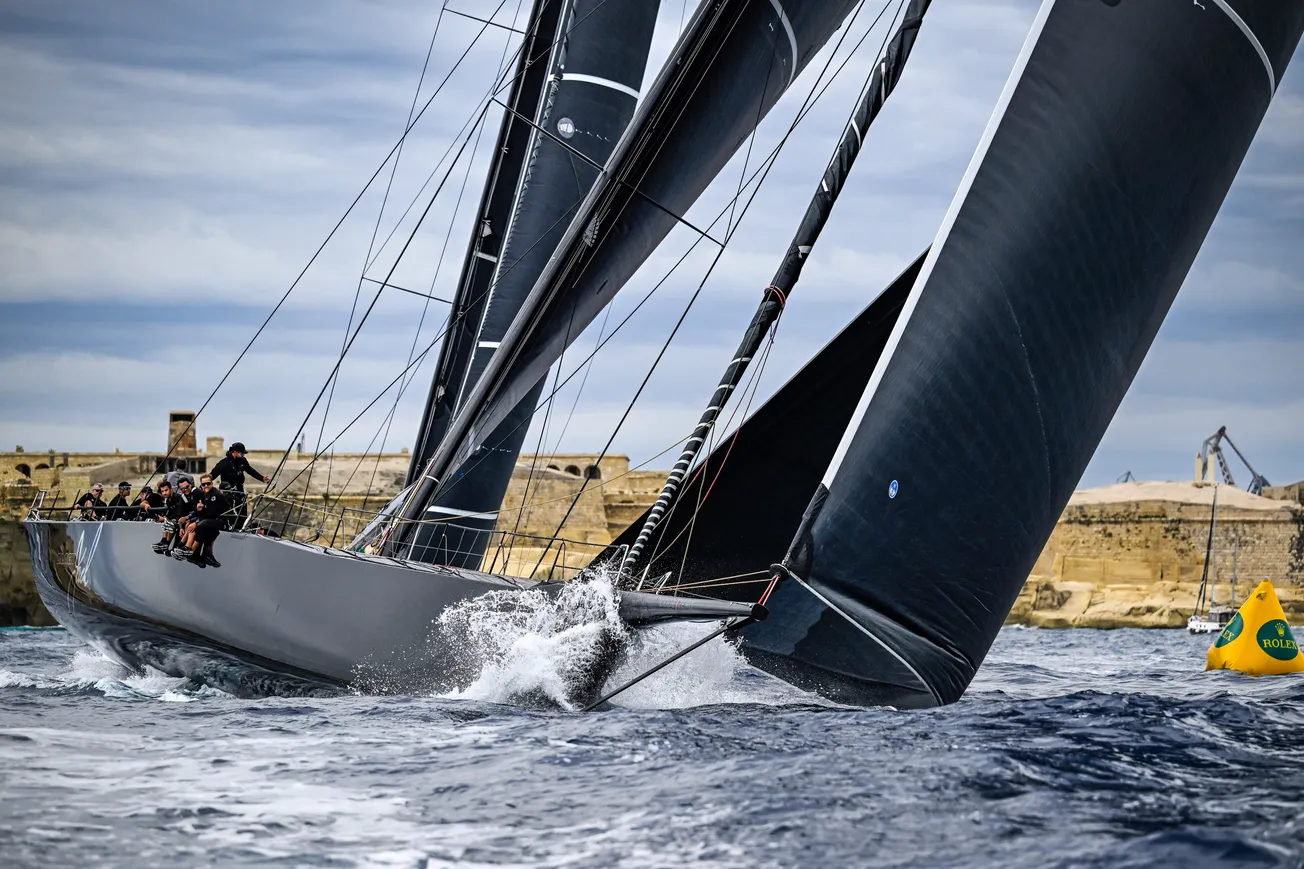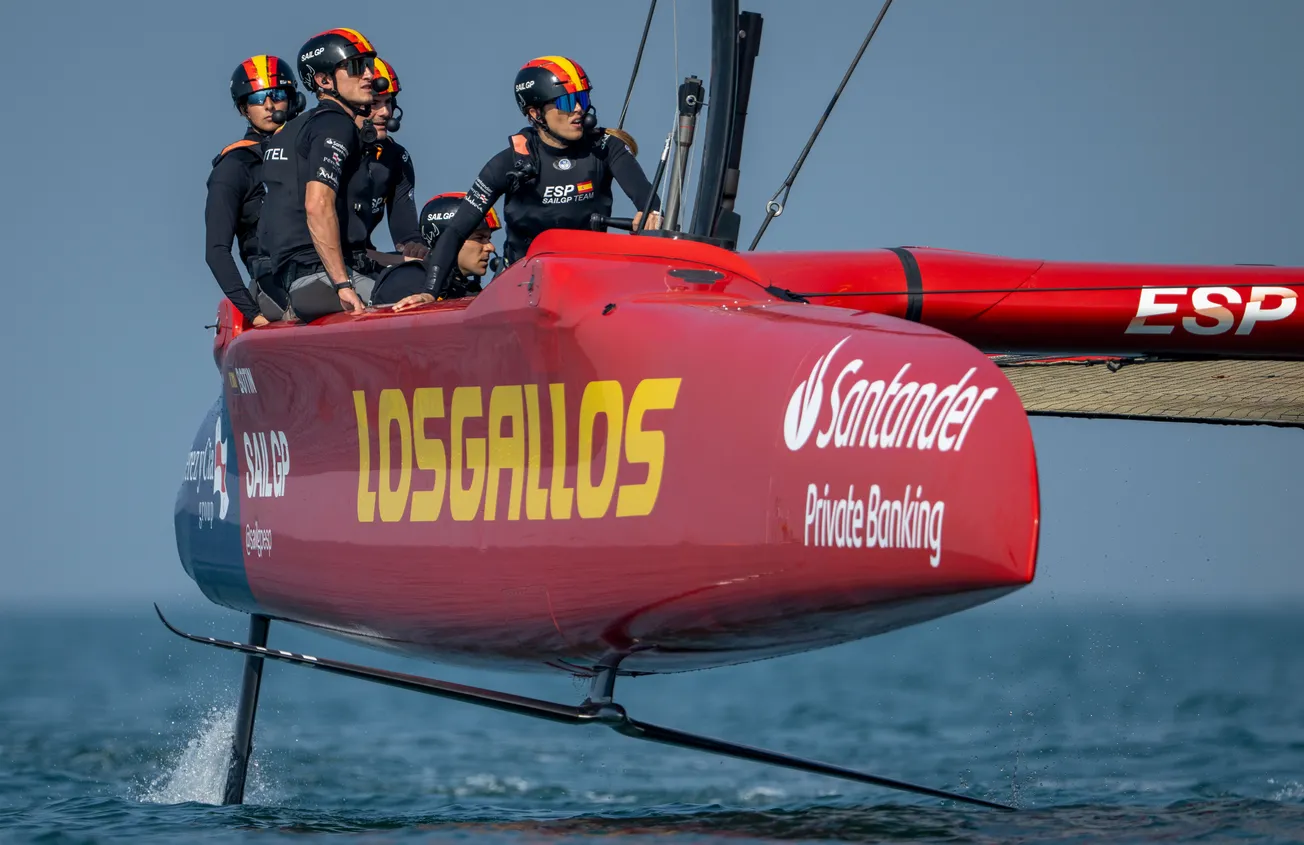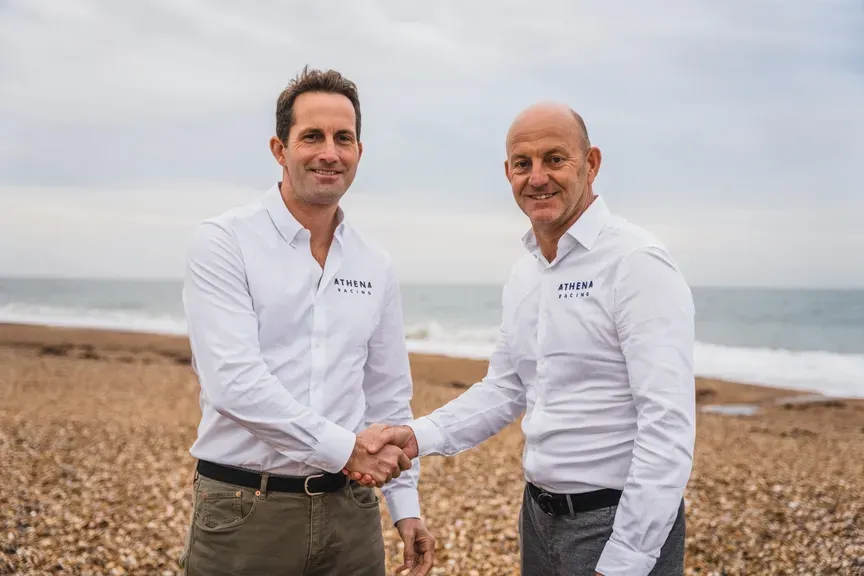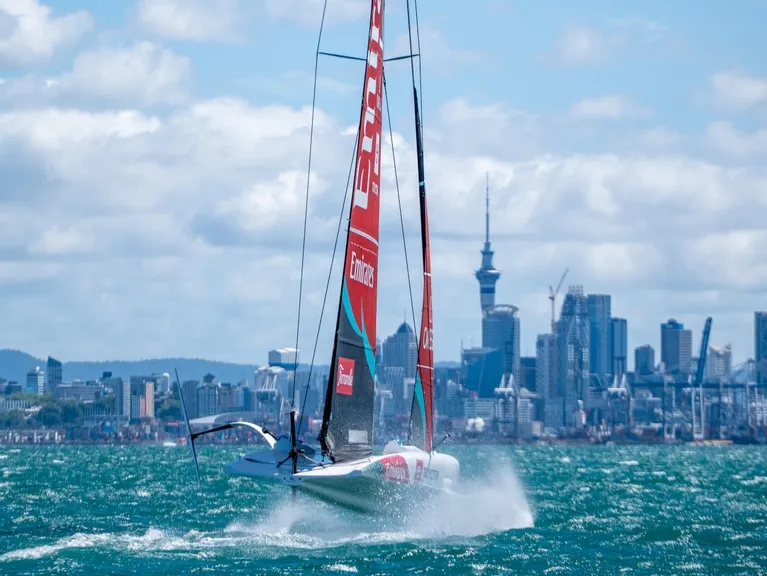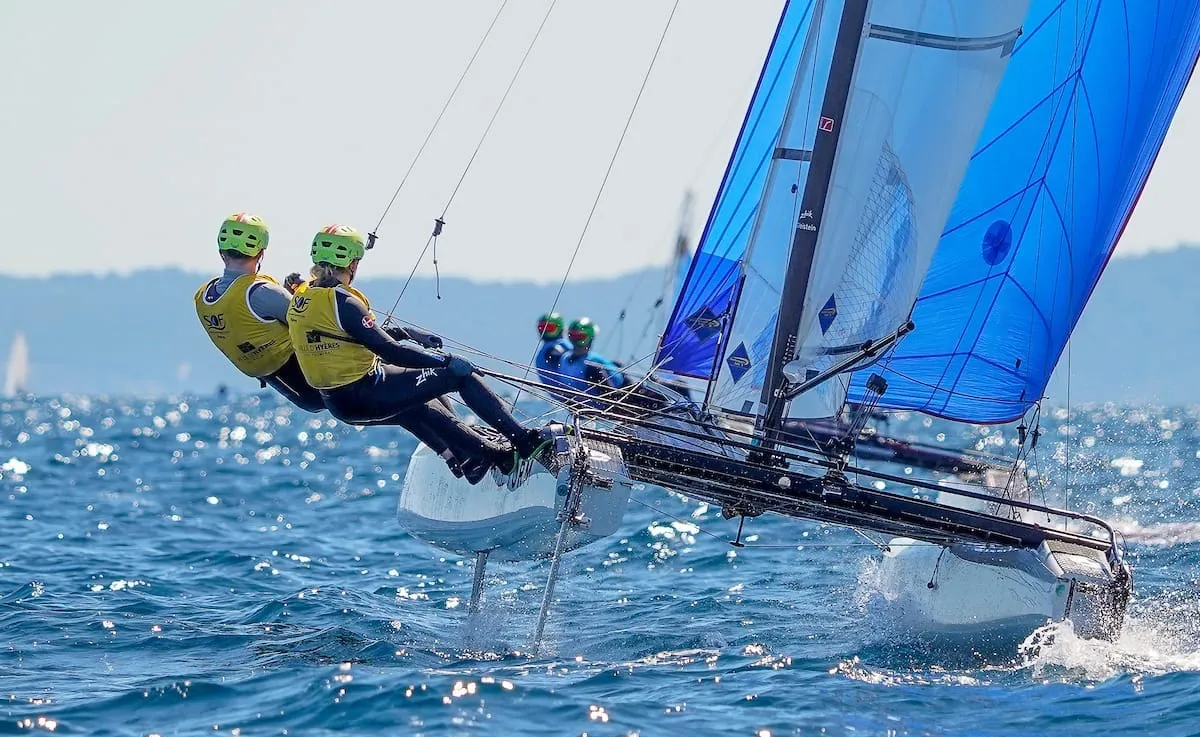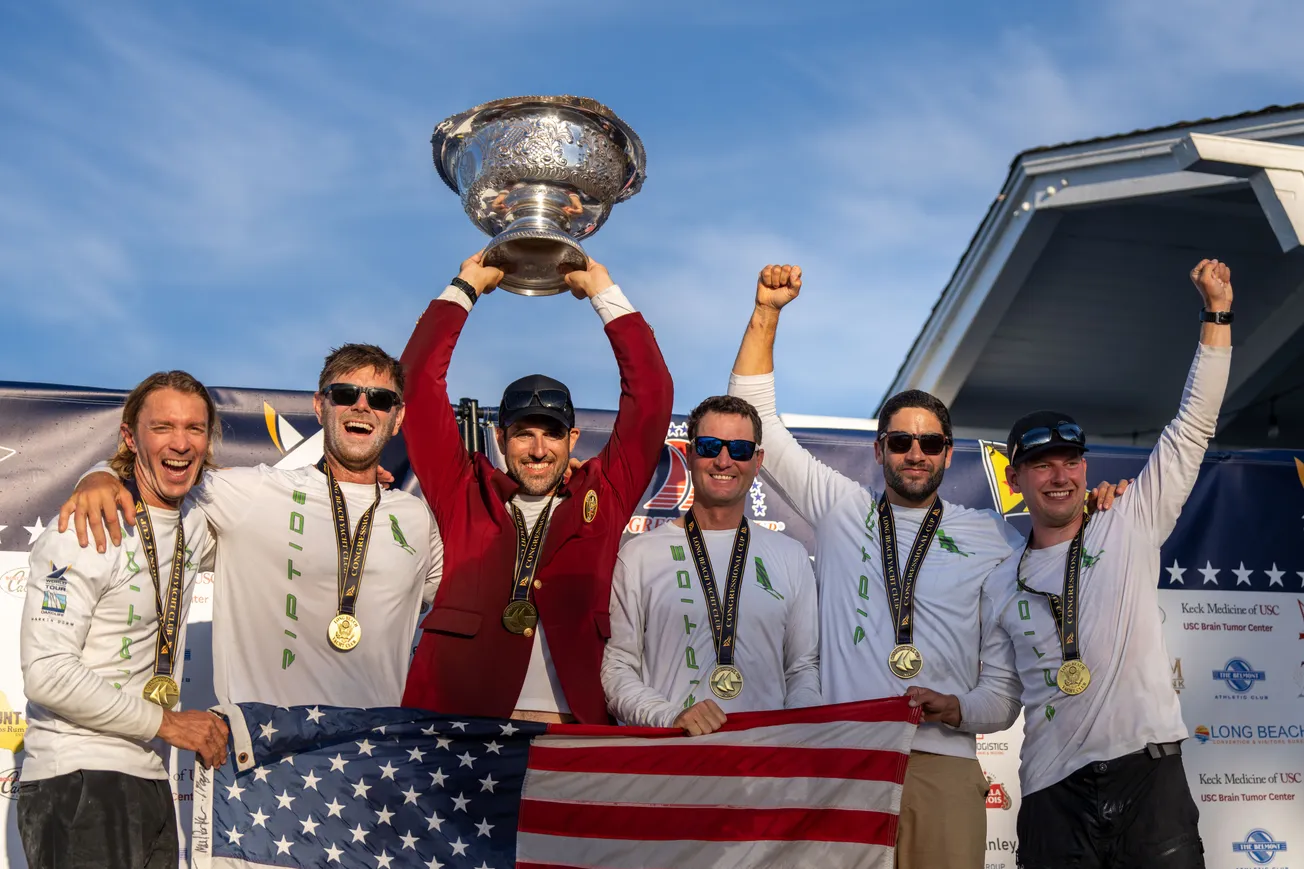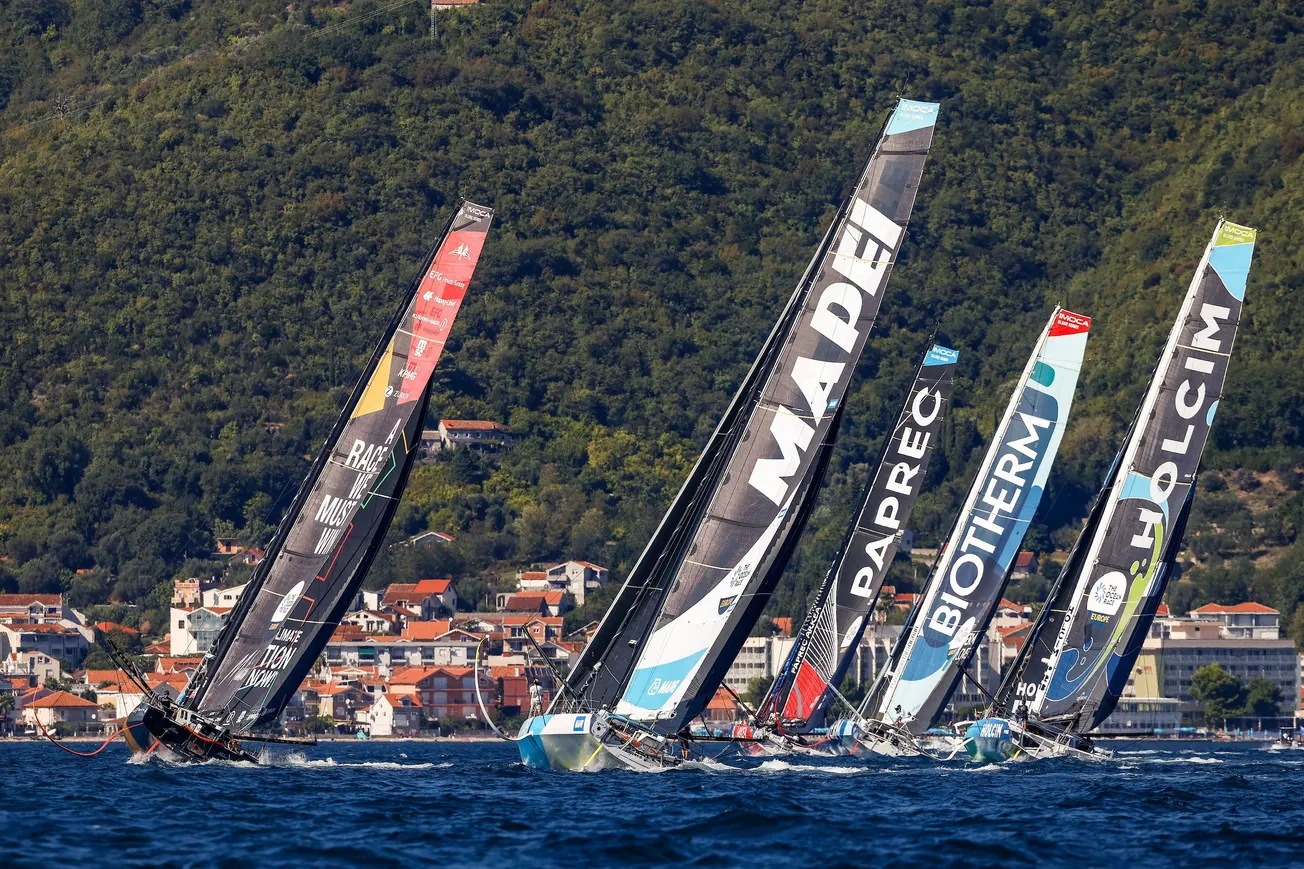Happy Tuesday everyone...
In today's newsletter:
- Why is the America’s Cup Partnership such a big deal? (Or is it the beginning of the end….)
- “The Deal That Saved the America’s Cup”
- The Magenta Project launches its biggest Mentoring Programme yet
- The ultimate chase boat: Key requirements for world-class race support
- Quiz Question...

Coverage and comment on the announcement of the signing of the America‘s Cup Partnership Agreement keep on coming, including two pieces from British sailing journalist Matthew Sheahan – the first on the Yachting World website and the second on his PlanetSail YouTube channel.
Why is the America’s Cup Partnership such a big deal? (Or is it the beginning of the end….)
Back in August the Protocol for the 38th America’s Cup was finally agreed and signed. Within it were details of a major structural change to the America’s Cup: the formation of a new Partnership, but that was only finally agreed last week. Matt Sheahan analyses why it's important…

Despite looking like another bland piece of America’s Cup politics and procedure, it is difficult to overstate the significance of the newly formed America’s Cup Partnership (ACP).
First revealed a few weeks ago in the 38th America’s Cup Protocol, the ACP changes fundamentally the way in which the Cup will be run in the next cycle and beyond.
And while there are good reasons for the change, it’s not going to be universally popular. In fact, this could be the most controversial Cup move in modern times, some say it could even be the beginning of the end for the Auld Mug as we know it.
Sir Ben Ainslie, who has played a major part in creating the ACP – and whose team Athena Racing represents the Royal Yacht Squadron, the Challengers of Record – says this is, “The biggest step change in the history of the Cup,” and that the ACP is, “Critical to the future success of the Cup.”
His opposite, Grant Dalton, CEO of Emirates Team New Zealand representing the Defenders, the Royal New Zealand Yacht Squadron is equally punchy. “If we hadn’t have done this it could have been pretty much the end of the Cup.”
Both are bold statements and both will raise plenty of comment and fierce debate.
Spreading the load
Traditionally, if you win the America’s Cup you take on the responsibility for putting on the next event once a Challenger has thrown down the gauntlet.
It’s a big obligation, both logistically and financially and puts huge pressure on both the Defenders and the club they represent, especially in multi-challenger Cup cycles where the burden of hosting an event that runs for months can place huge demands on infrastructure…
“The Deal That Saved the America’s Cup”
The latest America’s Cup development is the biggest step change in the history of the Cup according to Sir Ben Ainslie. He also says that the newly signed America’s Cup partnership (ACP) is ‘Critical to the future success of the Cup.’
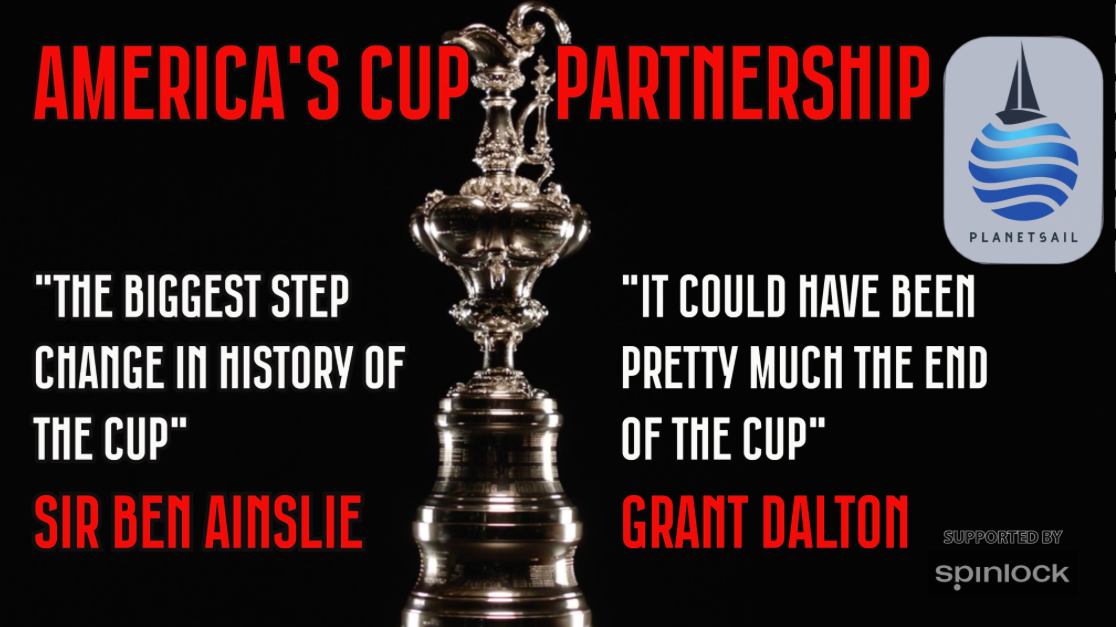
His opposite Grant Dalton is equally bold.
‘If we hadn’t have done this it could have been pretty much the end of the Cup,’ he says.
Punchy talk by both given that the Cup has endured 174 years without such
So why do these two key Cup figures think that the America’s Cup Partnership is such a big deal?
Matt Sheahan talks to both men about the details that lie behind the new move and asks what it means for the future of the Cup…

The Magenta Project launches its biggest Mentoring Programme yet
The Magenta Project has officially launched the 2025/26 edition of its Mentoring Programme, which is now entering its tenth year, by welcoming its largest and most diverse cohort to date.
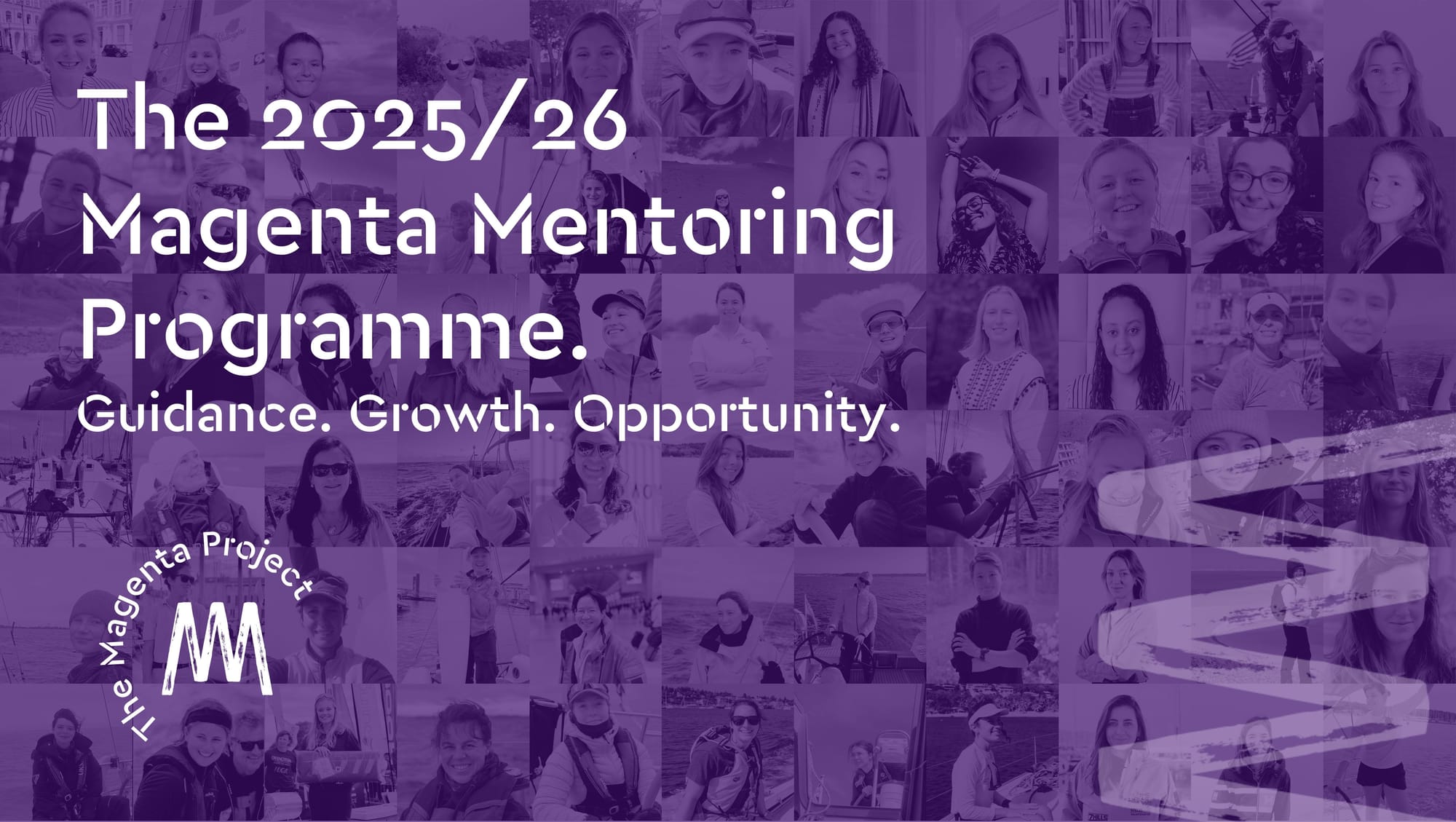
With double the number of mentors and mentees compared to previous years, this cycle marks our biggest programme yet and continues to be a cornerstone to increase equity and inclusion across sailing and the wider marine industry.
From Mentee to Mentor
This year marks a significant step forward for the programme. Male allies make up 18% of the mentors, underlining that equity is a collective effort. Returning mentor Benjamin Schwartz is joined by new names such as Tim Kröger, Stuart Childerley and Carlos Manera, demonstrating the importance male allies. At the same time, ten of this year’s mentors are former mentees - proof of the programme’s powerful ripple effect, where support and growth turn into leadership and giving back.
A special highlight is the group of returning mentors from Team SCA (founding members of The Magenta Project), whose impact continues to resonate ten years on. Carolijn Brouwer, who has mentored every single year since the programme began, is joined again by Elodie-Jane Mettraux, Justine Mettraux, Liz Wardley, Annie Lush, and Abby Ehler. Their commitment shows the long-term value of mentorship in helping women advance in all areas of the sport.The programme also welcomes new mentors bringing fresh expertise and perspectives:
Polly Gough, medical advisor at The Ocean Race; María del Mar de Ros Raventós, former CEO of the Spain SailGP Team; and Louise Morton, who has played a pivotal role in the revival of the Quarter Ton class and championed inclusion with her all-female team.
Other mentors to spotlight include Alexandra Rickham, Director of Sustainability, and Hannah Stodel, Paralympics Lead, both part of the management team at World Sailing; and Francesca Clapcich, who is starting her Transat Café L’OR campaign with 11th Hour Racing in the coming days. They will be mentoring alongside an impressive list of leaders across eight pathways; Offshore, Inshore, Foiling, STEM, and new pathways including Media, Leadership, Race Management and Race Support.
To underline The Magenta Project’s focus on inclusion and removing barriers to participation a bursary support has also been made available through a new fund supported by the Tom and Margery Pindar Bursary Fund. Six mentees will benefit from this first year of the Fund.
Mighty Magenta Community Hub
This year also marks the roll-out of the Mighty Magenta Community Hub, the charity’s brand-new digital community hub. For the first time, mentees and mentors will have a dedicated online space to connect, share resources, and grow alongside The Magenta Project’s global network.
Victoria Low, CEO of The Magenta Project, said:
“Mentoring is not a solo project, it’s a discipline. We’re proud to see this programme double in scale and evolve each year, while also being open to collaboration with other global mentoring initiatives. A huge thank you to our mentors for their commitment and generosity - their guidance is what makes this programme so impactful. We are inspired to see how the 2025/26 cohort build their careers and pathways in our industry. Together we can build something stronger than any of us could achieve alone.”
Since 2018, nearly 300 mentees have been supported by over 100 mentors, creating a cycle of confidence, skills, and leadership that continues to shape the future of women in sailing.
Click the button below for more information about the programme, pathways, or to learn about bursary support.
The ultimate chase boat: Key requirements for world-class race support
When the world’s top sailors take to the water, their performance is only part of the story. Behind every race team, there is an equally committed shore crew ensuring the athletes have the support they need to compete at the highest level.
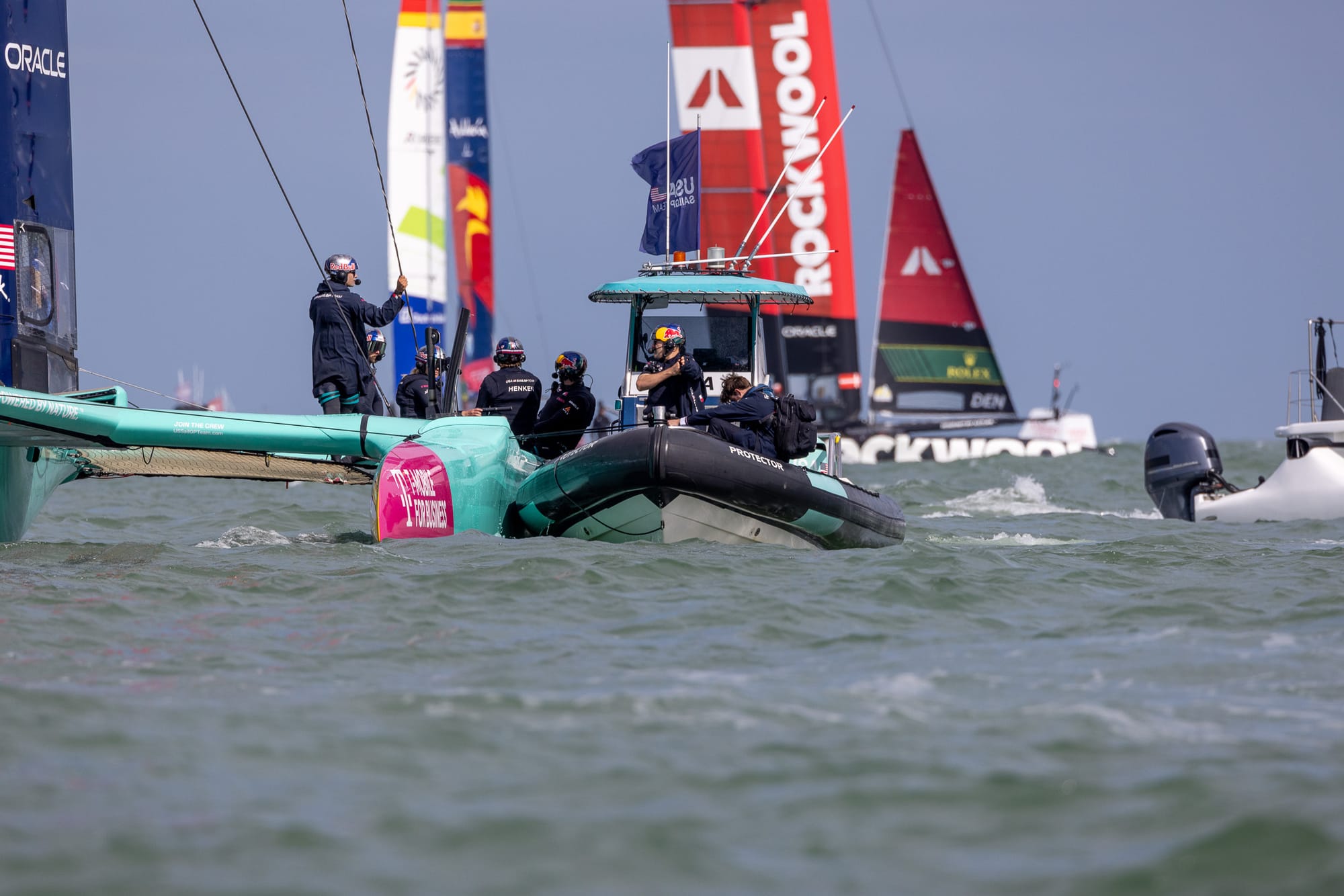
At the heart of this support system is the chase boat – a vital, if often overlooked, piece of equipment that can make the difference between smooth operations and a logistical nightmare.
Whether it’s the America’s Cup, SailGP, TP52s, or classic yacht regattas, every racing class has specific operational demands. The size and performance of the race boat, crew numbers, and the scale of international series all determine how a chase boat must function. Yet, across all these variations, there are common characteristics that make a chase boat truly fit for purpose.
Andy Andrews, European representative for Protector Boats through PB Europe (part of the Ancasta Group), has spent years at the forefront of this conversation. With a career spanning leisure and commercial RIB supply, search and rescue boat development, and specialist support for elite race teams, Andrews has developed a keen understanding of what makes a chase boat excel.
“A chase boat is not just a tender, it’s the nerve centre for the team on the water,” Andrews explains. “It keeps coaches close enough to observe performance, provides a safety net in the event of gear failure, and often doubles up as a logistics hub, a media platform, or even a rescue vessel. That versatility is why it must be designed and specified to an incredibly high standard.”
The non-negotiables of a chase boat
At its core, a good chase boat must combine speed, reliability, and adaptability. It needs to be able to match the performance of the race yacht it is supporting, while also carrying crew, spares, tools, and sometimes even additional sails.
There are many high-performance RIBs capable of achieving the speed required to keep up with the world’s fastest yachts. However, very few chase boats can maintain a stable working platform at high speeds and in challenging sea states – a critical factor when crews are filming yacht performance or using laptops to analyse real-time performance data. This is where Protector stands out, delivering a stable and reliable platform that allows shore teams to continue their duties without compromise.
Another important – yet often underestimated – requirement is transportability. For teams competing in worldwide circuits like SailGP, moving chase boats around the globe is a logistical challenge.
“Easy shipping in a standard container is imperative,” Andrews notes. “If your chase boat can’t be packed down and shipped cost-effectively, then your international campaign instantly becomes far more expensive and complicated.”
This is an area where Protector, again, proves its worth. Andrews continues: “After an event, the Protector Chase 330 can be packed down in just a couple of hours: once the boat is placed on a cradle, tubes deflated and bimini removed, it slides straight into a standard 40ft shipping container. And it’s just as quickly reassembled and back on the water, ready for action once it arrives at the next regatta.”
Flexibility is always a top priority
Every race team has different needs, but flexibility is paramount. From crew transfers to media filming, from urgent repairs to safety operations, a chase boat may be asked to fulfil half a dozen roles in a single day. As one of the leading suppliers in this space, Andrews and the team at Protector Boats work closely with stakeholders to understand their requirements so they can customise Protector’s RIBs to each team’s individual specifications.
“By sitting down with the owners and shore crews, we can design flexible deck arrangements that support multiple activities,” Andrews says. “We produce detailed renders so teams can see how the options will work in practice. It’s about listening, then delivering exactly what they need.”
Typical solutions that Protector has developed for race teams include:
- Stainless steel deck tie points for securing sails and gear
- Extended bimini shades for coach comfort during long days afloat
- Uprated tow posts for handling high-performance yachts
- Enhanced electronics packages for data gathering and communication
- Stretcher stowage and large-capacity freshwater washdown systems for safety and practicality
Many top-level teams also require commercial coding for their chase boats – another area where Protector delivers.
Real-world proof
Protector’s credentials in this field are clear. Its high-performance RIBs are already deployed as chase boats by some of the most demanding race organisations in the world, including:
- America’s Cup
- AC40
- SailGP – supporting all 12 teams across the globe
- TP52s
- M3 classic boat racing
Essentially, what makes the ultimate chase boat is the same thing that makes a world-class race team: preparation, precision, and the ability to adapt. By combining commercial-grade reliability with custom specification, boats like Protector’s RIBs give elite teams the tools they need to focus on winning races – confident that their support craft won’t let them down.
For Andrews and the team at PB Europe, the mission is clear.
“Every chase boat we deliver is about enabling performance at the highest level,” Andrews concludes. “When a team knows their support boat is completely fit urpose that’s when they can focus 100% on racing. That’s what makes the difference.”
Quiz Question...
What is the new name for the Transat Jacques Vabre double-handed transatlantic race that follows the historic coffee trading route between France and Brazil?
Answer in the next newsletter...
Monday’s answer: We asked which iconic offshore race traditionally starts on Boxing Day?
A) Rolex Middle Sea Race
B) Sydney to Hobart Yacht Race
C) Transat Jacques Vabre
D) Fastnet Race
E) Vendée Globe
The correct answer is: the Rolex Sydney to Hobart Yacht Race.


